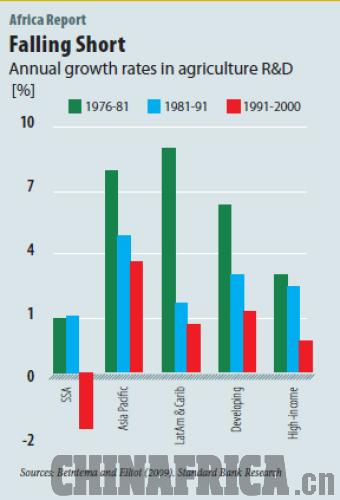| 
While there are meaningful objections to the nature and structure of much of the new investment in African agriculture, it is clear that the introduction of new capital, skills and technology is an essential component in unlocking the continent's ultimate allure.
Investments of $83 billion annually are said to be needed to elevate the developing world's agricultural sector. At least half of this amount is required in Sub-Saharan Africa (SSA) alone.
Land leasing deals, if managed well (which is generally not yet the case), have the potential to supply infrastructure, create employment, increase public revenues, and introduce new technologies and skills to local farmers in Africa, according to the Organization for Economic Cooperation and Development.
These investments, as well as renewed government policy vigor, are particularly important when considering the manner in which Africa's agricultural sector has persistently under-performed for much of the past half century.
Indicatively, Africa has gone from being a net food exporter in the early 1960s, to a net importer. Indeed, many countries are reliant on food aid to sustain local demand. A 2-percent annual increase in food production in recent decades has been insufficient to meet demand from a rising population. Between 1998 and 2008, the number of hungry people in SSA increased by 20 percent. And, between 1967 and 2007, farm output per person in SSA fell by one quarter, even while it doubled in South Asia and tripled in East Asia as Green Revolutions in these regions bore fruit.
While cereal yields per hectare of harvested land have increased in virtually all regions of the world, in SSA they have shown little improvement since 1960.
Under-investing govts
The reasons for Africa's under-performance are complex, and varied. Yet, certain elementary causal dimensions are clear. For one, African governments have persistently under-invested in the sector.
On average, African countries allocate 4 percent of their budgetary expenditures to agriculture, compared to 14 percent in Asia. Spending on agricultural research and development (R&D) has also been consistently minimal, even declining between 1991 and 2000 in SSA (see graph).
|